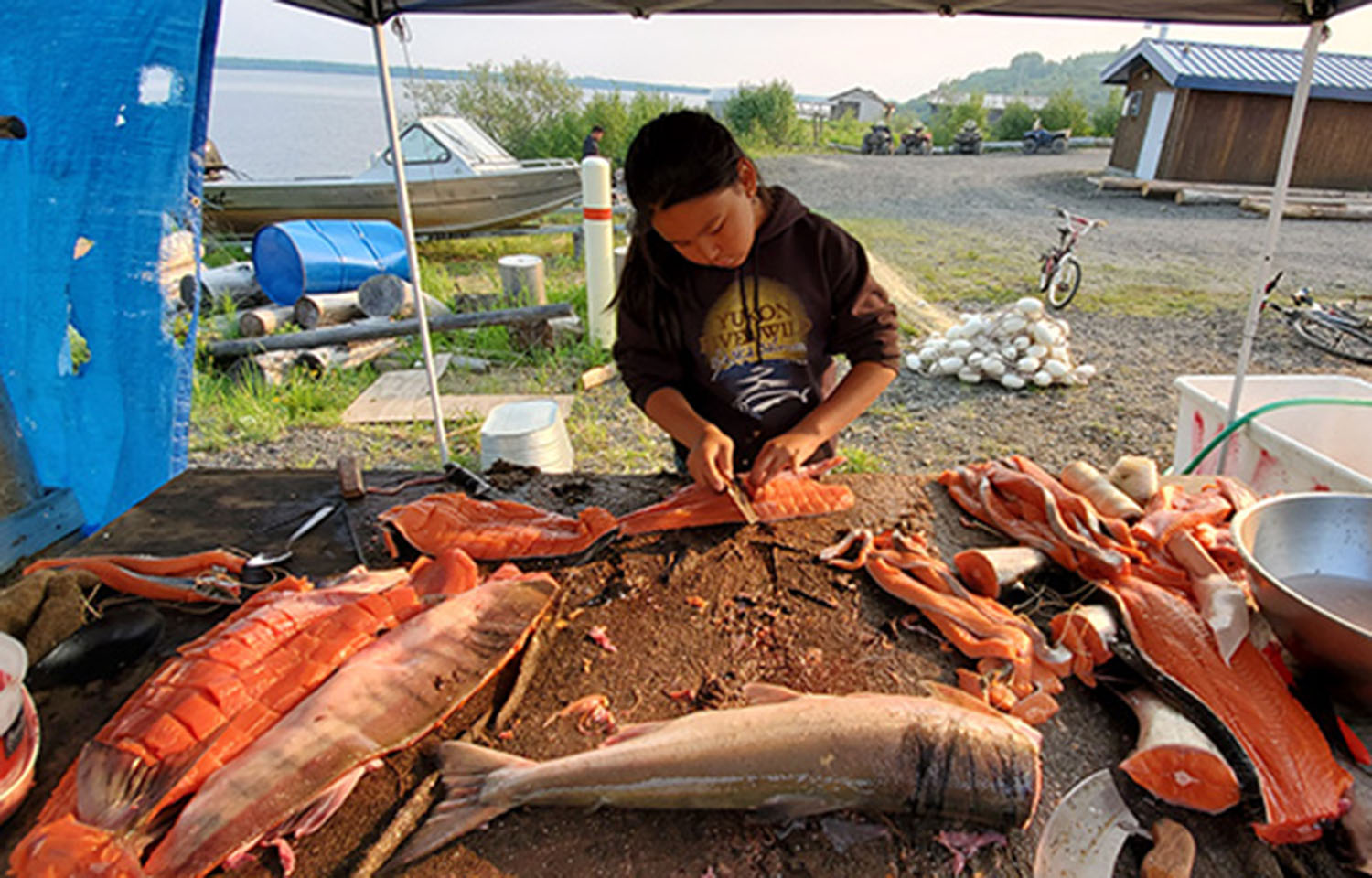NOAA Fisheries has denied a request for emergency action to institute a cap of zero on Chinook salmon bycatch in the Bering Sea pollock fishery, which would have closed the fishery for the first half of 2024.
Group’s representing Alaska’s commercial and recreational salmon fisheries and Native Alaskan groups have clashed with the Alaska pollock sector over the cause of smaller Chinook salmon runs and actions that can be taken to reverse the decline.
The request to lower the pollock sector’s allowed Chinook salmon bycatch limit, which currently ranges from 45,000 to 60,000 depending on abundance, to zero, was impractical, NOAA said in its 18 April decision.
The request, submitted on 17 January 2024, effectively asked U.S. Secretary of Commerce Gina Raimondo to close the Bering Sea pollock fishery, which opened on 20 January, for the first half of 2024, NOAA said.
The petition was submitted by the Association of Village Council Presidents, the Kuskokwim River Inter-Tribal Fish Commission, the Tanana Chiefs Conference, the Yukon River Drainage Fisheries Association, and the Yukon River Inter-Tribal Fish Commission.
The petition also requested the Commerce Department urge the North Pacific Fishery Management Council to evaluate and update current Chinook salmon bycatch management regulations.
“Instituting a cap of zero Chinook salmon bycatch in the Bering Sea pollock fishery would effectively close the largest fishery in the United States. It would adversely impact the people, organizations, and communities who rely on it, including Community Development Quota groups that provide substantial benefits to underserved communities,” NOAA said. “The complete elimination of Chinook bycatch is not practicable and the petition did not meet the three criteria for taking an emergency action.”
Implementing emergency regulations also bypasses the normal process for public participation in rulemaking that Congress intended under the Magnuson-Stevens Act and the Administrative Procedure Act, according to NOAA.
“Controversial actions with serious economic effects generally should be done through normal notice-and-comment rulemaking,” the agency said.
The closure would not effectively resolve the Chinook salmon crisis in rivers in Western and Interior Alaska, NOAA said.
“Since 2011, NOAA Fisheries estimates the number of Chinook salmon that would have returned to Western Alaska river systems had they not been caught as bycatch in the pollock fishery, represents an annual average of 1.9 percent of total Chinook salmon returns to Western Alaska river systems,” the agency said. “Closure of the Bering Sea pollock trawl fishery in 2024 is unlikely to result in escapement goals being met. It will not substantially increase the likelihood of greater subsistence and commercial harvests. Additionally, other fisheries in the Bering Sea would continue to contribute to Chinook salmon bycatch.”
NOAA acknowledged Western and Interior Alaska communities are suffering from impacts to food security and cultural traditions due to record low Chinook salmon returns and declines of other salmon stocks in recent years.
“Salmon are a critical food resource in a region that is already food insecure,” NOAA Fisheries Assistant Administrator Janet Coit said. “Our hearts go out to members of the Western and Interior Alaska communities whose lives have been upended in so many ways by the sharp downturn in salmon returns for more than the last decade. We hear you! We know the situation is dire, and we are committed to working with you, the state of Alaska, the North Pacific Fishery Management Council, the commercial fishing industry, and others to continue to seek meaningful improvements in the status of western Alaska salmon runs.”
Despite those concerns, the best available scientific information indicates that the proposed action is not likely to address the broad changes in the marine and freshwater environment that continue to affect Western Alaska Chinook salmon, according to NOAA.
In 2023, 11,855 Chinook salmon – 26 percent of the total allowable Chinook salmon prohibited species catch limit – were taken as bycatch in the Bering Sea pollock fishery. Of that total, 47.2 percent originated from Western Alaska river systems and less than 1 percent originated from the Yukon River in 2023, according to NOAA. NOAA’s research has found declining Chinook salmon returns since 2007 are primarily caused by ecosystem-wide changes associated with climate change.
“We continue to monitor and study these changes as part of our ecosystem-based approach to fisheries management,” NOAA said.
The agency’s recent annual Bering Sea Ecosystem Status Report (2023) indicates that early marine mortality, driven by slow growth, is a leading factor in declining Chinook salmon returns.
“The transition from freshwater to marine phase presents a critical phase for salmon to obtain preferred, energy-dense prey in order to grow large enough to evade predation,” NOAA said.
The Alaska Pollock Fishery Alliance, which was formed in March to provide unified industry representation of Alaska's pollock trawl fishery in public forums, said it supported NOAA’s decision.
“The APFA supports NOAA’s determination that the best available scientific information indicates that instituting a cap of zero Chinook salmon bycatch in the Bering Sea pollock fishery is not likely to address the broad changes in the marine and freshwater environment that continue to affect Western Alaska Chinook salmon. We also appreciate NOAA’s holistic view that instituting such a cap would adversely impact the people, organizations, and communities who rely on Alaska’s pollock fishery, including Community Development Quota groups that provide substantial benefits to underserved communities,” APFA said. “We remain committed to continuous improvement in our salmon avoidance efforts and developing solutions that maintain the sustainability of all Alaska fisheries.”








